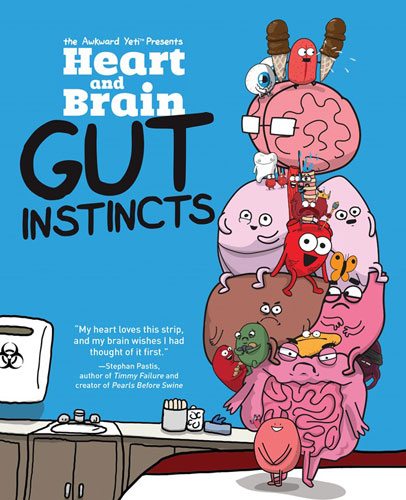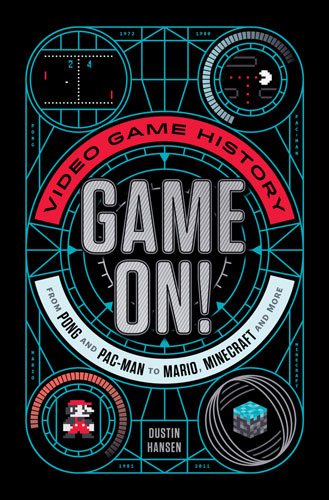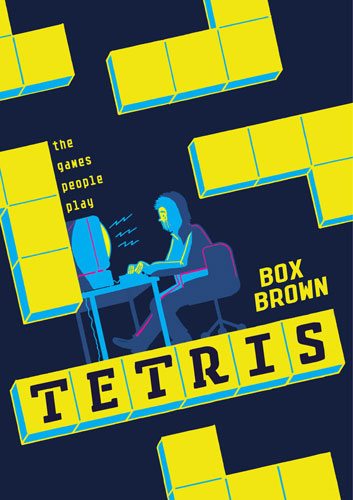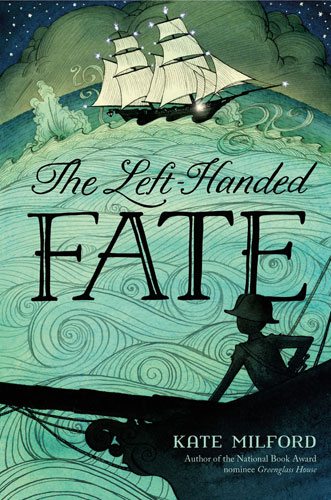When I started my Stack Overflow column, it was because I was reading more books (particularly picture books) than I could review, but I really wanted to share what I’d been reading. Recently, though, my reading has been a bit slower—some combination of the holidays, children’s activities, and finally catching up on Stranger Things and Luke Cage has cut into my reading time, so instead of nice sets of books that share a theme, I have a weird grab-bag of comics, kids books, non-fiction, and a partridge in a pear tree.
Heart and Brain: Gut Instincts by Nick Seluk
Lars, the Awkward Yeti, has a complicated relationship with his internal organs, particularly Heart and Brain, who are so often at odds with each other. Heart is spontaneous and impulsive, and has big dreams, if only Brain weren’t such a downer. Brain is careful and realistic, and has big plans, if only Heart didn’t throw everything out the window. Gut Instincts is a collection of the strips featuring the various body parts—Gall Bladder, who just wants to show everyone the stones it made; Tongue, who has strong opinions about low-fat options—but the big focus is on Heart and Brain who are, after all, the real stars of the show.
The comics are hilarious, sometimes painfully funny, because Heart and Brain reflect so many relationships (including mine) in which there’s a tug-of-war between thinking and feeling. You know what I’m talking about: one person is working on a budget, and the other one has just spotted a brand new shiny something in the window. (For another example, just refer to the short film Inner Workings that played before Moana, which relates a very similar struggle.) If that sounds like your own relationship—whether you’re Heart or Brain—this book is for you.
Buckle and Squash: The Gigantic Giant Goof-Up by Sarah Courtauld
I read the first Buckle and Squash book out loud to my kids last year, and they loved it—it’s ridiculous and silly, a fairy tale gone wrong. This one continues the adventures of Eliza and Lavender, two sisters who are as different as, well, Brain and Heart. Eliza wants to be a heroine; Lavender wants to be a princess. But it’s Lavender who manages to get her hands on a magical snail (who grants wishes in a way that is technically what you asked for but not really), and her wish sends them off on a crazy adventure in the land of the giants.
My reading-out-loud has decreased significantly this year, largely because of my kids’ increased activities, so although this is a pretty short book, it took us a long time to get through it because we missed so many nights. But every time we picked it up, it was easy to fall back into the story, and it was always good for a lot of laughs.
Game On! Video Game History From Pong and Pac-Man to Mario, Minecraft, and More by Dustin Hansen
First off: despite what the title and cover might suggest, this is a kids’ book. I thought it might be a book written for adult gamers, but it’s definitely written for a younger audience, both in the way things are explained and with references to school and parents and so forth. That said, it’s a pretty great book about, well, the history of video games, as seen through the lens of many seminal titles. Each of the video games gets a chapter that talks about what makes the game important and what it added to video games—what made it popular, or innovations that it added. Even though I was familiar with many of the games (at least the older ones), I did learn some facts that I didn’t know before, and it was fun to get this blast through the evolution of gaming.
The book itself is mostly text with some screenshots and, occasionally, photos of gaming systems or peripherals, but it’s all in black and white, which I think is a shame. Most video games just don’t look as good in black and white, really, and I think it could have been a lot more vibrant with color screenshots. There’s also lots of marginalia: fun facts that would probably be footnotes in a book intended for older audiences, but are sidebars with little icons in this book.
Interspersed throughout the book are “insert” chapters as well, focusing on a particular topic rather than a specific video game. For instance, there are top 10 lists of villains and heroes and cheat codes, explaining what “IP” means, and how Steam came to be. Really, if you’ve got a kid who loves video games and likes trivia, this book is chock-full of interesting stories, and because of the short chapters, it’s a pretty quick read. Even an adult who loves video games will probably get something out of it—just ignore those parts where the book’s explaining things to you that you already knew.
Tetris: The Games People Play by Box Brown
Now, if you want to get more in-depth about a hugely influential (and totally addictive) video game, here’s a great comic book. My own first experience with Tetris was on our NES, and when I went to college I had a knock-off version on my PC that spurred an ongoing high score competition with my roommate that lasted about two years. I still credit it for my ability to pack things, whether it’s a suitcase or a refrigerator or the back of the van on a long trip. But I only knew a little bit about the history of the game and how it came to be a worldwide phenomenon.
It turns out the true story is pretty crazy, involving the Soviet government, several competing software companies, and a lot of shady business deals. Box Brown, who has also written a non-fiction graphic biography of Andre the Giant (see this Stack Overflow), tackled the story. If you’re a Tetris fan, you owe it to yourself to check out this book and learn more about the origins of this phenomenal game. (I’ve also got a copy of The Tetris Effect, another recent book about the game, but I haven’t gotten a chance to read it yet. Expect that to appear in a future Stack Overflow.)
The Left-Handed Fate by Kate Milford
I read The Left-Handed Fate earlier this summer, and was intending to include it in a Stack Overflow with other books about boats (like Lucy Bellwood’s Baggywrinkles), but … I never got around to reading enough books about boats to do a whole column. It’s about Lucy Bluecrowne, the daughter of a privateer; Max Ault, a young scientist; and Oliver Dexter, a twelve-year-old midshipman who has been unexpectedly placed in charge of the Left-Handed Fate. England is at war with France, and America has just declared war on England, too—but Lucy and Max are trying to piece together a mysterious engine that allegedly can end all wars.
The story, intended for middle grade readers, is set during in 1812 and has historical elements to it, but also incorporates magic (in the form of “alchemy”). I really loved the sea-born adventures and the political intrigue, and the descriptions of life on a ship (as well as the fish-out-of-water feeling that Lucy has on land) were fascinating. It’s a wonderful adventure book and I highly recommend it—it reminds me a little bit of The Apothecary (though set in an earlier period) in the mix of magical science.
Punky Brewster (Volume 1) written by Joelle Sellner, illustrated by Lesley Vamos
Remember Punky Brewster? Honestly, I don’t actually remember a whole lot about the show, even though I know I watched it when I was a kid. This book, published by Roar Comics last summer, brings Punky’s story into the modern world. In case you need a refresher (like I did): Punky’s an eight-year-old girl who was abandoned by her mom in Chicago, and doesn’t think she needs any help—but she gets picked up by the police and put into the foster care system. When she meets Henry, a long-lost relative, she decides he’s the perfect dad—despite the fact that this single guy isn’t really interested in having a kid—or her dog.
But Punky has “Punky Power”—a whole lot of spunk—and she just won’t give up, whether she’s talking to the foster home, the adoption judge, or Henry himself. Yes, it’s charming and sweet in all the same ways the TV show was, but it was fun to see it in this new form, and through new eyes now that I’m a father and not just a kid.
Trish Trash: Rollergirl of Mars (1) by Jessica Abel
So, my family’s really into roller derby. My wife and two older daughters both play, and my youngest has already picked out her derby name and is working on her skating skills because she can’t wait to play roller derby herself. So, naturally, I’m always curious to see how the sport is presented in books. (Roller Girl by Victoria Jamieson, in case you haven’t read it, is a fantastic book about kids’ derby, and I highly recommend it.)
Trish Trash is a sci-fi comic book, and features a sport called “hoverderby”: it looks like it follows the rules of banked track roller derby, though it uses hover skates instead of roller skates, and the skaters’ numbers and symbols are holo-projected instead of worn on their arms and jerseys and helmets. Patricia really loves derby and wants to go pro, because it seems like it might be the only way to escape her life as a moisture farmer on Mars. She’s juggling derby life with shifts on the farm … and then a half-dead Martian shows up.
This is only the first volume, so I have no idea what happens next, but I’m really curious. Jessica Abel has created a fascinating world and culture on Mars—it’s a new world, but people have the same old prejudices and fears and desires. My only complaint is that it’s so short—only 64 pages—and it may be a long wait until the next chapter. According to Abel’s website, if you buy a copy between now and January 1, email her the receipt for a PDF of a flipbook of Trish skating, plus a preview of Volume 2!
Disclosure: I received review copies of the books in this column.











